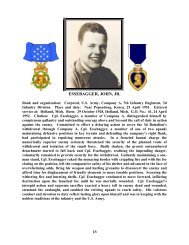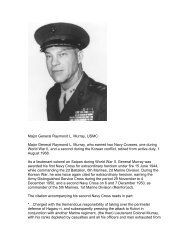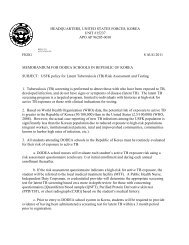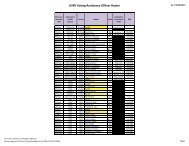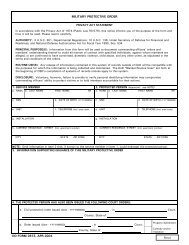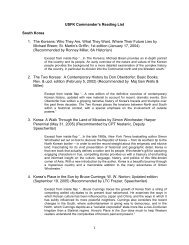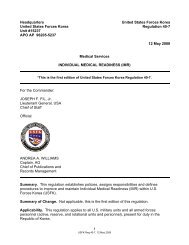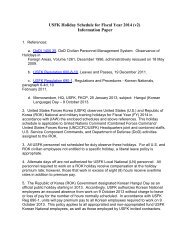Curtis Utz, Assault from the Sea, The Amphibious Landing, Naval ...
Curtis Utz, Assault from the Sea, The Amphibious Landing, Naval ...
Curtis Utz, Assault from the Sea, The Amphibious Landing, Naval ...
You also want an ePaper? Increase the reach of your titles
YUMPU automatically turns print PDFs into web optimized ePapers that Google loves.
Coastal Artillery Regiments,<br />
was a motley force that included<br />
some South Koreans<br />
forced into service. <strong>The</strong> 226th<br />
had been fur<strong>the</strong>r weakened<br />
when headquarters earlier<br />
sent a large detachment toward<br />
Yonghung Do to knock<br />
out Clark’s guerrillas. In<br />
addition, after <strong>the</strong> loss of<br />
Wolmi Do, <strong>the</strong> best-prepared<br />
position in <strong>the</strong> harbor, <strong>the</strong><br />
918th was in bad shape.<br />
<strong>The</strong> North Korean defensive<br />
effort was fur<strong>the</strong>r hampered<br />
by attacks every hour and a<br />
half by eight Marine Corsairs,<br />
which dropped fragmentation<br />
bombs and napalm. <strong>The</strong> latter<br />
ordnance was especially<br />
effective against enemy<br />
troops, whe<strong>the</strong>r dug in or<br />
exposed. In addition, to keep<br />
pressure on <strong>the</strong> enemy,<br />
twelve Navy carrier aircraft<br />
rotated between Yellow <strong>Sea</strong><br />
combat air patrol and strike<br />
operations inland.<br />
One of <strong>the</strong> latter missions<br />
proved to be extremely lucrative.<br />
While flying along <strong>the</strong><br />
road to Suwon, Ensign Eldon<br />
W. Brown, Jr., of VF-53<br />
stitched a long row of neatly<br />
stacked wooden crates with<br />
machine gun fire. When <strong>the</strong><br />
rounds impacted, <strong>the</strong>re was<br />
a massive explosion, <strong>the</strong> force<br />
of which violently jolted<br />
Brown’s plane. He climbed<br />
quickly, but an enveloping<br />
cloud of dust and debris<br />
passed him at 4,000 feet. In<br />
Inchon harbor, miles away,<br />
ships rocked at <strong>the</strong>ir anchors.<br />
Mount McKinley radioed <strong>the</strong><br />
strike leader, Lieutenant<br />
Commander Joseph M. Murphy,<br />
and asked him, “What<br />
<strong>the</strong> hell happened?” Murphy<br />
replied dryly, “We just exploded<br />
some ammunition.”<br />
On that critical day, 15<br />
September, aircraft carrier<br />
Boxer arrived on station and<br />
ready for battle, culminating<br />
two months of Herculean<br />
effort by her crew. During<br />
that time <strong>the</strong> ship crossed <strong>the</strong><br />
vast expanse of <strong>the</strong> Pacific<br />
three times, fighting typhoon<br />
Kezia on <strong>the</strong> last passage, to<br />
transport badly needed aircraft<br />
to UN forces in <strong>the</strong><br />
Korean <strong>the</strong>ater. But this<br />
effort took its toll on a ship<br />
that was scheduled for an<br />
overhaul before <strong>the</strong> outbreak<br />
of war. Early on <strong>the</strong> 15th, a<br />
reduction gear in <strong>the</strong> engineering<br />
plant suffered a<br />
Engine room personnel, often called<br />
<strong>the</strong> “black gang” or “snipes,” had to<br />
use all <strong>the</strong>ir skills to maintain speed<br />
to make sure that <strong>the</strong>ir ships arrived<br />
on time off Inchon.<br />
NA 80.G-419918<br />
31



